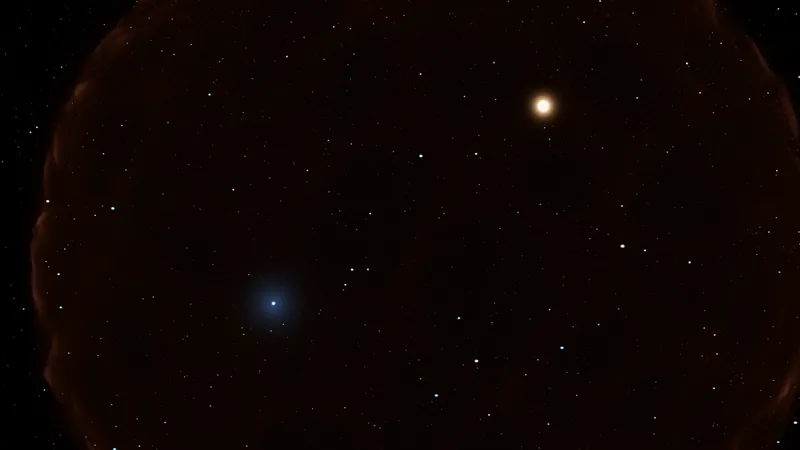
Unveiling Cosmic Mysteries: How an Ancient 3-Star System Supercharged a 'Blue Lurker' Star!
2025-01-15
Author: Arjun
Have you ever looked up at the night sky and marveled at the myriad of stars twinkling above? Each one hides a unique story etched in light, elements, and behavior—a cosmic history that spans billions of years. Among the celestial wonders, one group of stars has captured the curiosity of astronomers: Messier 67, or M67.
This large cluster, located in the outer regions of the Milky Way, consists of about 500 sun-like stars, all approximately four billion years old. However, a curious anomaly arises within its midst—11 enigmatic stars, affectionately dubbed “blue lurkers.” These stars defy expectations by spinning ten times faster than anticipated for their age, prompting astronomer Emily Leiner and her team to dig deeper into their origins.
Speaking at the 245th American Astronomical Society meeting, Leiner, an assistant professor at the Illinois Institute of Technology, expressed, “These stars look totally normal, but are spinning suspiciously fast for their age. What on Earth is going on?”
Through new observations from NASA’s Hubble Space Telescope, Leiner’s team uncovered the intriguing truth: one of the blue lurkers was once part of a complex triple-star system. Their research suggests that the star received its turbo boost during a chaotic merger of its two stellar companions millions of years ago.
Published on January 13 in *The Astrophysical Journal Letters*, this study sheds light on a rare example of a triple-star system’s evolutionary tale. Understanding these dynamics is crucial because triple star systems are prevalent in the universe, yet little is known about their interactions. Leiner commented, “We have largely been ignoring triples in models and simulations. We’re just starting to grasp how these systems evolve.”
Further analysis revealed that the blue lurker star is not alone; it is gravitationally bound to a much more massive white dwarf, a remnant of the chaotic merger that transpired long ago. This particular white dwarf is unusual, being far heavier than typical white dwarfs, hinting that it formed from a star that had merged in the past.
The intriguing backstory suggests that about 500 million years ago, an inner binary system merged, forming a massive star that weighed three times more than our sun. The blue lurker, witnessing this cosmic drama, later accreted material expelled by the massive star, leading to its rapid rotation. Over time, the two stars spiraled inward, dramatically reducing their orbital period from 3,500 days to just 359 days.
Despite its tumultuous past, the blue lurker appears deceptively serene in telescope imagery of M67. However, up close, it reveals dynamic features, including starspots and hot plasma loops, driven by its intense magnetic field, a byproduct of its rapid rotation.
This captivating discovery not only sheds light on the life cycles of stars but also highlights the complexities of stellar evolution. As astronomers continue to explore the mysteries of the universe, clues like the story of the blue lurker inspire wonder and fuel the quest for knowledge about our cosmic neighborhood.
 Brasil (PT)
Brasil (PT)
 Canada (EN)
Canada (EN)
 Chile (ES)
Chile (ES)
 Česko (CS)
Česko (CS)
 대한민국 (KO)
대한민국 (KO)
 España (ES)
España (ES)
 France (FR)
France (FR)
 Hong Kong (EN)
Hong Kong (EN)
 Italia (IT)
Italia (IT)
 日本 (JA)
日本 (JA)
 Magyarország (HU)
Magyarország (HU)
 Norge (NO)
Norge (NO)
 Polska (PL)
Polska (PL)
 Schweiz (DE)
Schweiz (DE)
 Singapore (EN)
Singapore (EN)
 Sverige (SV)
Sverige (SV)
 Suomi (FI)
Suomi (FI)
 Türkiye (TR)
Türkiye (TR)
 الإمارات العربية المتحدة (AR)
الإمارات العربية المتحدة (AR)